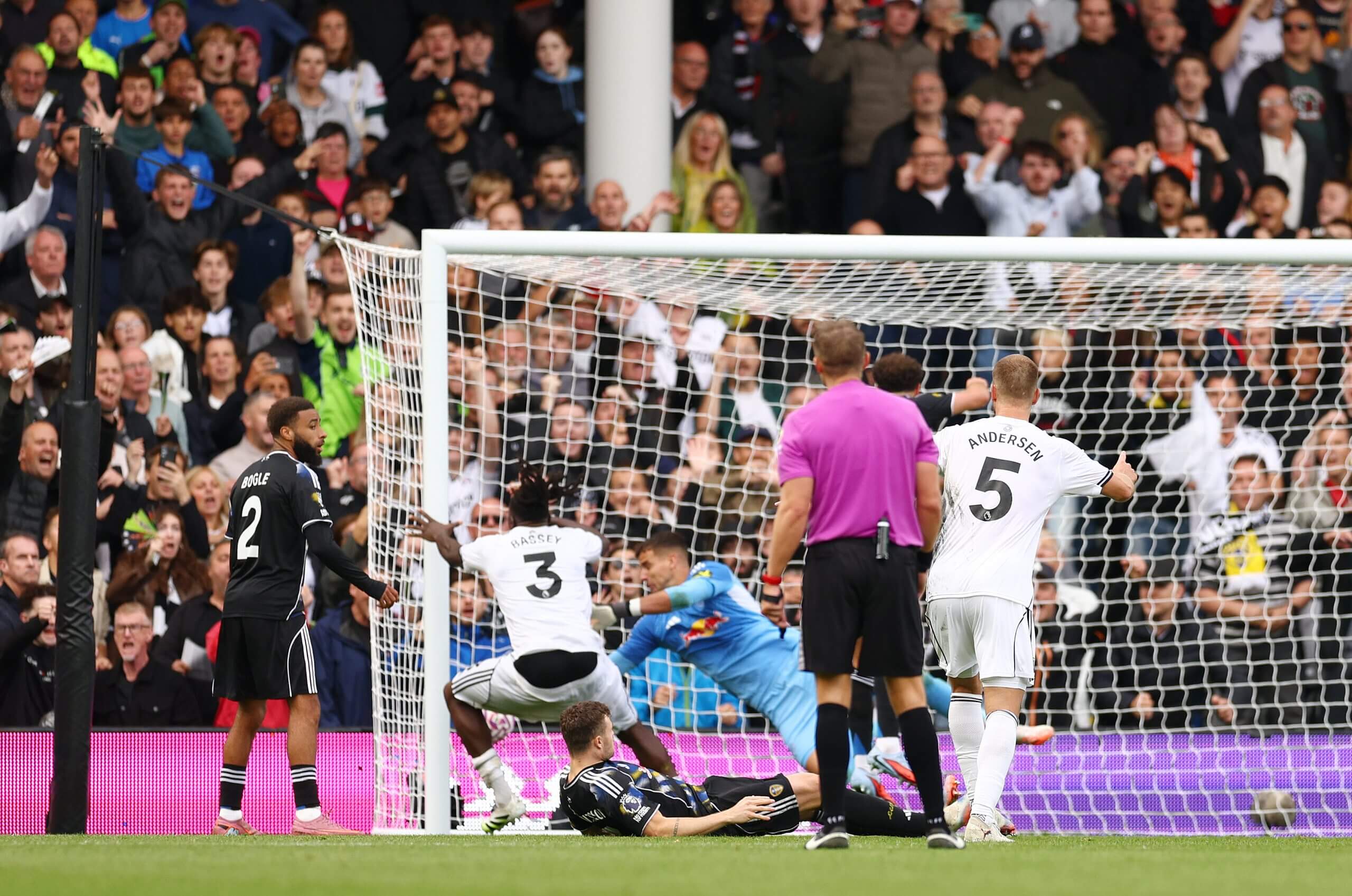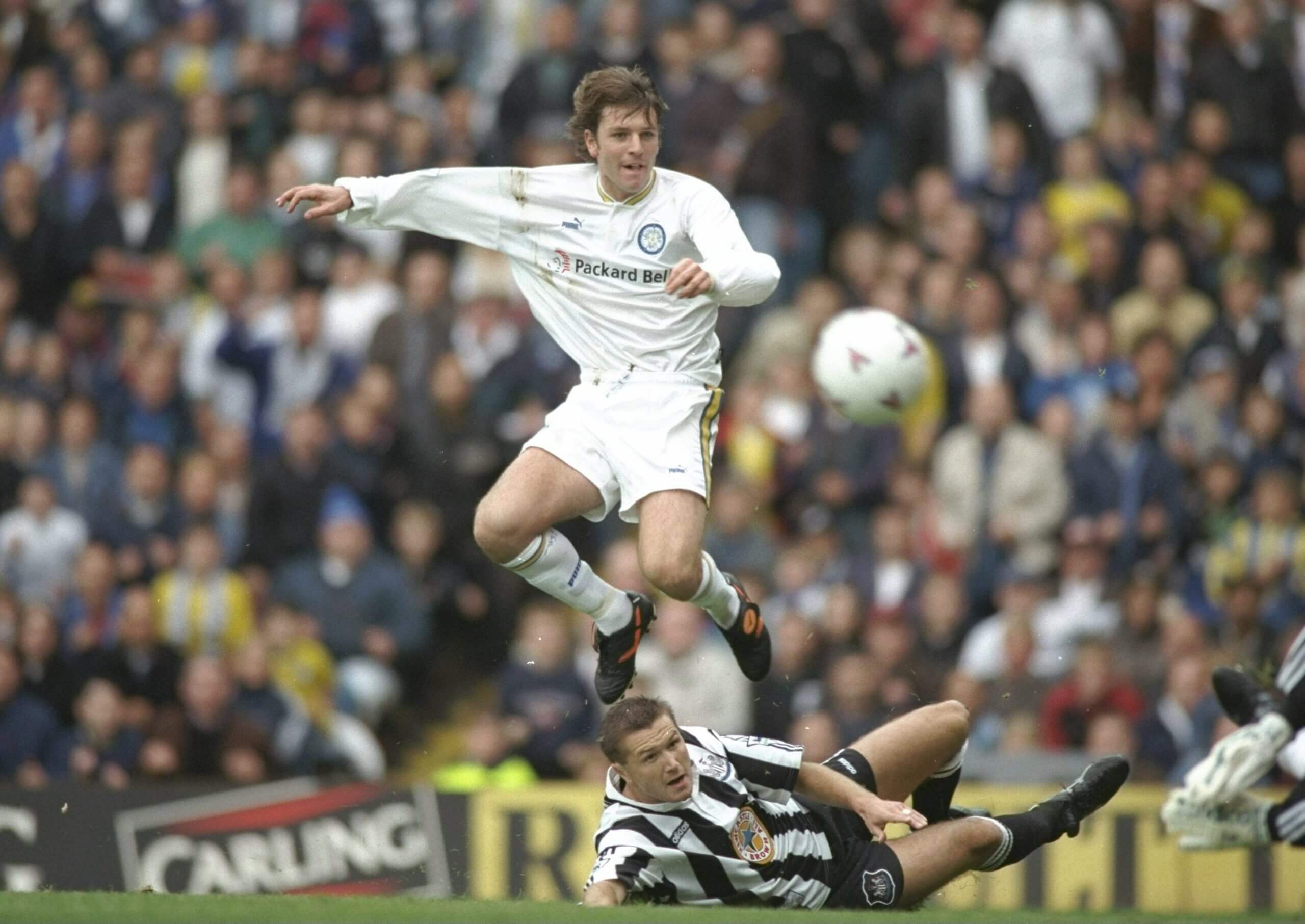Leeds United are yet to score from open play in more than six hours of Premier League football this season. The one goal the team scored came from the penalty spot, and even that was a contentious decision in some quarters.
Saturday’s heartbreaking defeat at Fulham, where chances were at a premium, has prompted some alarm. Only goalless Aston Villa have found the net less frequently than Daniel Farke’s side. Is this small sample size simply a slow start in the final third or more indicative of the eight months ahead?
United’s non-penalty expected goals (npxG) tally from the opening four matches is 2.9 (only Sunderland and Wolverhampton Wanderers have created less). That means, on balance, they should have just about scored three goals, besides the penalty, up to now.
This shows chances have been created, but the finishing has been lacking. Everton were comprehensively outplayed, with 21 shots to seven, three on target to one, three big chances to one, and an npxG of 1.34 to 0.8.
Arsenal was a nightmarish write-off for Leeds. Newcastle United were predictably harder to crack than Everton, but the hosts led on xG by 0.69 to 0.46, 10 to eight on shots, and one to zero on big chances. It was a distinctly poor spectacle, but Leeds competed well with a Champions League side.
Most recently, Fulham edged it 0.85 to 0.79 on xG and two big chances to one, but Leeds had 10 shots to five. What may be more pertinent is how close the visitors were to a third clean sheet in four games before Gabriel Gudmundsson put many strikers to shame with his arrowed header.

Gudmundsson scoring his own goal against Fulham (Clive Rose/Getty Images)
Leeds have conceded an npxG of 4.0 thus far, which, of course, includes a trip to title-challenging Arsenal. Only seven teams have restricted their opponents to a lower npxG tally in the league this season.
Farke has repeatedly said he wants to prioritise defensive solidity this season, and that has been borne out in the opening matches. Where is the balance, especially for a relegation battler, between attack vs defence?
How meagre can an attack be and survive? How good does the defence need to be in propping that front line up for 38 games?
In the history of the Premier League, 10 teams survived the drop despite scoring fewer than 33 goals. Leeds, as you will see, jointly hold the record with West Yorkshire neighbours Huddersfield Town for the fewest goals scored in survival.
What is most remarkable about that George Graham-led side is the fact they finished 11th, comfortably clear of the relegation zone. Leeds reached 46 points, six clear of 18th, while Huddersfield only got to 37, four points clear of 18th.
The major difference was in defence. United shipped just 38 goals, an average of one per game, to have the fourth-best defensive record in the 20-team division. Huddersfield allowed 58, equating a goal difference of minus 30, the second-worst in the league that year.
The rest of the table shows not only how few goals a team has to score in surviving the drop, but how recently it’s been done, too. Wolves, in 2022-23, scored 31, but, like Huddersfield, conceded 58 and finished 13th. They were seven points clear of 18th, too.
You will have noticed that was the season Leeds were relegated. They scored 17 more than Wolves, but conceded 20 more and went down with 10 fewer points. Defence first worked in that one example.
Graham’s side of 96-97 generated an astonishing 20 clean sheets. They remain the only team in the competition’s history to generate 20 or more shut-outs and finish outside the top half. They are surrounded in the table below by champions and Champions League qualifiers.
Expecting Lucas Perri to match Nigel Martyn is unrealistic and extreme, but if Leeds are going to remain workmanlike in attack, the Brazilian and seven players in front of him need to be rock solid this season.
Tony Dorigo made 18 appearances in Graham’s back four of 96-97. He said the defence-first approach was everything you might have expected from their training sessions.
“It never was ‘forget about attacking’ or anything like that, but I do remember the focus was on making sure we really understood every single thing defensively,” he told The Athletic. “Those routines on a Thursday, a lot of it was defensive work.
“There was some attacking work in there, but, clearly, when you’re down the bottom, there’s no point scoring three if you’re going to concede four. That’s how he (Graham) thought, and we were put to task on the training ground.
“Clearly, looking at that record, it paid off. I remember it being a grind and I remember always thinking we’re going to be tough to beat, but I could not remember (that) we scored so little and we had nine nil-nils, which is crazy.
“When you’re keeping the opposition to nil, you’re always in the game; you could go and win.”
Graham had come to Leeds in September 1996. Howard Wilkinson had been sacked after five league games, including a 4-0 home hiding by hated rivals Manchester United.
Wilkinson’s replacement had a reputation for tight defences during his tenure at Arsenal, where he won top-flight titles in 1989 and 1991. Once he arrived at Leeds, it was clear to everyone what he would prioritise.
Gareth Senior, a Leeds season-ticket holder since 1987, said: “You looked at his pedigree and then you knew the first thing he’d do would be to get five or six solid people across the back, to stop shipping goals.
“We didn’t really have loads of flair in the side. Lee Sharpe was probably the most like that. (Lee) Bowyer was young and you didn’t know what he was going to turn into, but he was energetic.
“Then it was all about getting big players in at the back and just keeping it as tight and compact as possible, hope we could nick a goal and either nick a 1-0, 0-0 or a 1-1.”

The energetic Lee Sharpe (Shaun Botterill/Allsport)
Martyn admits it was not pretty to watch, but it forged the foundations for what David O’Leary went on to accomplish at the turn of the century, which culminated in a run to the semi-finals of the 2000-01 Champions League.
“What George would have done is looked at that and gone, ‘Flipping heck, look how open they are, look how easy they are to play against’,” he told The Athletic. “He realised what was needed to keep us in the division (and) that was to make us very defensively strong. We became defensively very strong, which was right in place all the way up until probably David O’Leary left.
“A lot of David’s success was based on George’s early time in putting a very strong defensive unit there.”
With a manager of Graham’s tactical reputation, a precarious league position, one of England’s best goalkeepers, dependable centre-backs, and a goal-shy attack, it was no surprise what transpired.
Sharpe and Brian Deane finished the season as top scorers with five apiece, while a 35-year-old Ian Rush scored three times in 36 outings, playing as a wide option in the main.
“He (Rush) had chances, but he just wasn’t the same,” said Dorigo. “At Liverpool, they were flying in the back of the net. You look at the players we had, it was very much a transition with players reaching the end of the line.
“I don’t remember being hugely frustrated (by the tactics) at all. It was a grind. In training, it was very, very methodical, similar, I suppose, to (Marcelo) Bielsa in his man-marking, making sure no one gets past you.
“We did that for hours and hours, hence we ended up being rather good defensively. We knew by then what we weren’t good at, so you have to play to your strengths.”
In pubs across Leeds, debates are probably being had about the merits of being bored and staying up versus attacking, expansive football that invites the threat of relegation under Farke. How was the experience in 1996-97 for fans?
Senior said: “It’s pretty much like we are now, isn’t it?
“You just go with the hope it’ll be a little bit different this time, but it’s the same when we go to Wolves this Saturday. We all know it’s not going to be any different from what we’ve just seen last Saturday, and we know Farke’s going to be delighted if they get a point, but the probability is we’ll lose 1-0 and hardly have a shot.

George Graham (centre) and his Leeds team were hard to beat (Gary Prior/Allsport via Getty Images)
“You were going to games (in 1996-97) thinking it’s doubtful we’ll get a goal, but we might nick one, and if we nick one, we’ve got half a chance, but there’s every chance we lose 1-0 because as soon as that side was falling behind, they couldn’t compete.
“If you look at the results, they couldn’t compete with the top clubs in the league.”
Three and four-goal hidings from the likes of Manchester United, Arsenal, Newcastle and Liverpool only underline just how many clean sheets Martyn had to return in keeping the overall goals conceded to 38.
While it was a season lacking in entertainment, fans and players had come to terms with their lot by the end of the year. They lost just three of their final 17 league games, but won only five.
Graham cut the club’s cloth accordingly, reset the defence, kept them in the top flight, and set them up for fifth in the following campaign.
“There were some very good players there that were, I don’t say better than playing that way, because that’s wrong,” said Martyn. “We could have played a different way and got relegated.
“Everyone realised it was a needs must situation. George realised that and then he slowly started to go into the transfer market and bring players in, like Jimmy (Floyd Hasselbaink for 1997-98), who was a great signing.”
Time will tell just how expansive or progressive Farke intends to be. He has argued that the chances have been there, but the efficiency has not. As the weeks go by, any comparisons to Graham’s 1996-97 side may fade away.
If he continues to prioritise defence as he has, perhaps hindsight will show he was right to, if they survive. Senior looks back at Graham’s team with that perspective now and draws comparisons with what Farke has at his disposal.
“I don’t think he (Graham) had any choice,” he said. “If he played against teams, we would have lost a lot of games. There wasn’t really any technical quality in the side.
“If you are comparing and you look at what (Anton) Stach, (Sean) Longstaff, (Ethan) Ampadu bring to a midfield, they’re very difficult to get past, they can all win headers, they can all tackle, but have they got five Premier League goals between them (across the rest of) this season? I doubt it.”
(Top photos: Getty Images)
